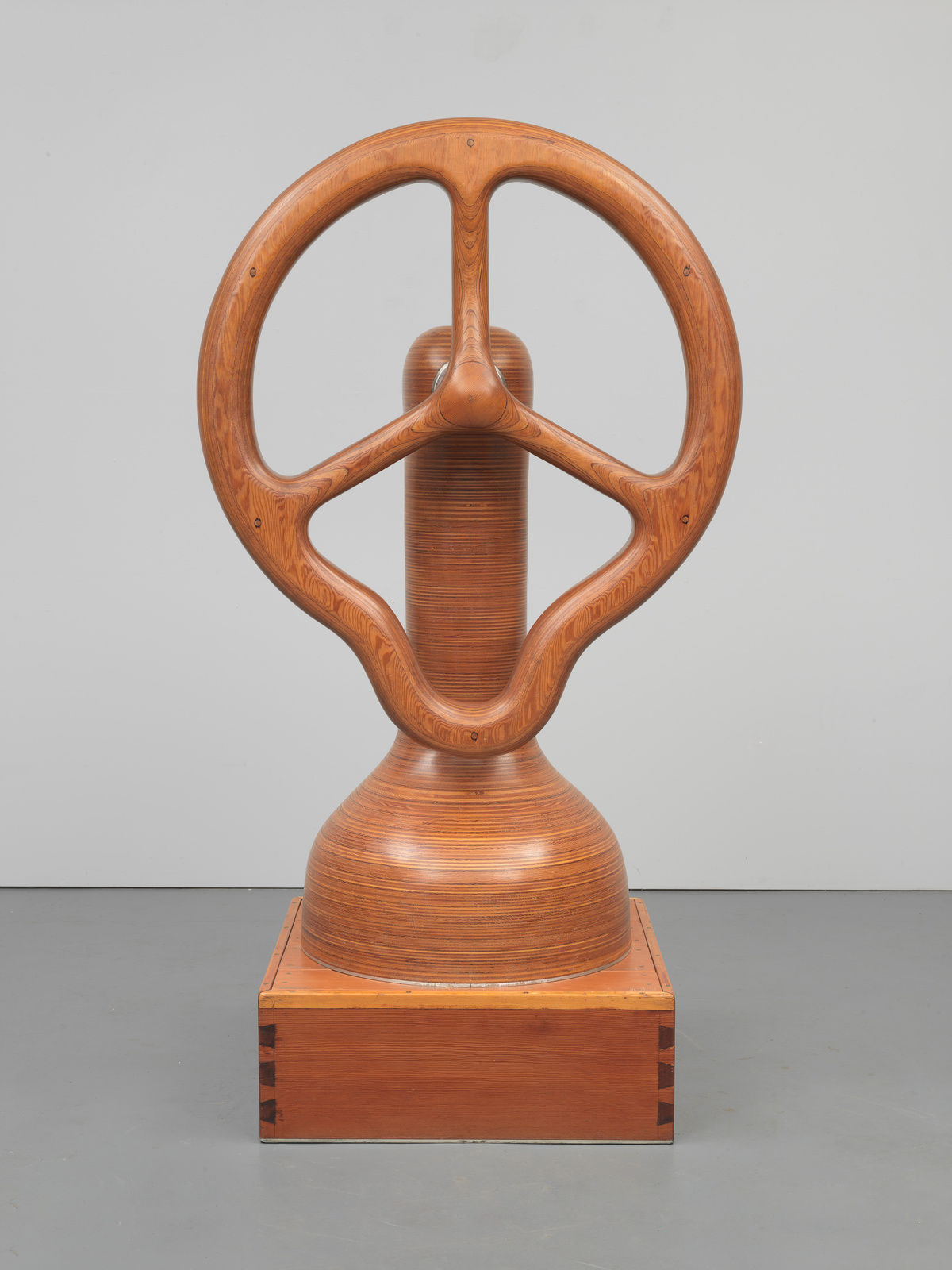Flawlessly constructed of marine plywood and Douglas fir, and lacquered to a glossy finish, Antimobile is made to move: the wheel turns on an axle fashioned from a bicycle pedal with a ball-bearing mechanism. As in several other pieces of the early- to mid-1960s, H.C. Westermann here treats wood laminates as if they were softly pliable elastic. But everything else about this floor-bound sculpture—from its name to its drooping contours—suggests immobility. With its misshapen and paralyzed steering wheel and such eccentric details as a diminutive wing-bolt crown, Antimobile conjures up a subversive, impotent machine, one that inhibits function and idolizes craft. Beyond the mordant humor that characterizes Westermann’s work is often anger at the crass commercialism he saw overtaking American culture: “everything is on wheels nowadays. . .a hundred million cars. . .and everything turns and it’s all a bunch of junk. . .I wanted to make something that was just completely anti-wheel, antimobile.” Though in scale and material Antimobile is more like a ship’s wheel than a car’s, it remains a penetrating expression of his belief that rampant industrialization had run amok in postwar American society.
Not on view
Date
1966
Classification
Sculpture
Medium
Laminated plywood
Dimensions
Overall: 67 3/8 × 36 5/16 × 27 5/8in. (171.1 × 92.2 × 70.2 cm)
Accession number
69.4a-b
Credit line
Whitney Museum of American Art, New York; purchase, with funds from the Howard and Jean Lipman Foundation, Inc. and exchange
Rights and reproductions
© Estate of H.C. Westermann / Licensed by VAGA at Artists Rights Society (ARS), New York

